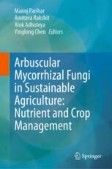Search
Search Results
-
Organism-Organism Interaction Models
The models introduced in Chap. 7 considered a single group of organisms. Here, we will expand this into groups...
-
C. elegans is not a robust model organism for the magnetic sense
Magnetoreception is defined as the ability to sense and use the Earth’s magnetic field, for example to orient and direct movements. The receptors and...

-
Rediscovering Chara as a model organism for molecular and evo-devo studies
Chara has been used as a model for decades in the field of plant physiology, enabling the investigation of fundamental physiological processes. In...

-
Daphnia magna as a Model Organism to Predict the Teratogenic Effect of Different Compounds
For aquatic ecosystem Daphnia magna is evolving as a model organism to check the teratogenicity of numerous compounds. D. magna can be easily...
-
The Organism in Evolutionary Explanation: From Early Twentieth Century to the Extended Evolutionary Synthesis
In recent years there have been a number of calls for integrating developmental and organismal phenomena into evolutionary theory. This so-called...
-
Arbuscular Mycorrhizae and Mycorrhizae Helper Organism—A Synergistic Movement Towards Soil and Crop Sustainability
The world is in verge of facing tremendous challenges to provide sufficient food for the increasing population in next decades. To maintain the...
-
Ontologies in Evolutionary Biology: The Role of the Organism in the Two Syntheses
This paper examines evolutionary ontologies from Darwin’s work to the genesis and maturation of the Modern Evolutionary Synthesis, followed by the...
-
Diagnostic Potential of Free Blood Choline as a Biomarker of the Physiological Status of the Organism
AbstractCholine is an essential nutrient. Mitochondrial dysfunctions, oxidative stress and associated risks of develo** non-alcoholic fatty liver...

-
Alternative splicing level related to intron size and organism complexity
BackgroundAlternative splicing is the process of selecting different combinations of splice sites to produce variably spliced mRNAs. However, the...

-
Towards organism-level systems biology by next-generation genetics and whole-organ cell profiling
The system-level identification and analysis of molecular and cellular networks in mammals can be accelerated by “next-generation” genetics, which is...

-
Stochastic Model of Infection with the SARS–COV–2 Virus in a Small Group of Individuals Indoors
A mathematical model of viral infection of a small group of people randomly moving indoors is proposed. The model consists of two different modules....
-
Efficiency in Organism-Environment Information Exchanges: A Semantic Hierarchy of Logical Types Based on the Trial-and-Error Strategy Behind the Emergence of Knowledge
Based on Kolchinsky and Wolpert’s work on the semantics of autonomous agents, I propose an application of Mathematical Logic and Probability to model...
-
Multicellular Organism Propagation
The essential principle of life perpetuation through uninterrupted life cycles of individual organisms is described in detail. During this process,...
-
Novel Organism Verification and Analysis (NOVA) study: identification of 35 clinical isolates representing potentially novel bacterial taxa using a pipeline based on whole genome sequencing
BackgroundReliable species identification of cultured isolates is essential in clinical bacteriology. We established a new study algorithm named NOVA...

-
Oxidative effects of the human antifungal drug clotrimazole on the eucaryotic model organism Saccharomyces cerevisiae
Clotrimazole is a type of antifungal medication developed from azole compounds. It exhibits several biological actions linked to oxidative stress....

-
Oxygen-Dependent Adaptation Processes in a Human Organism in Normal Living Conditions and during Space Flight
AbstractThe review examines various parties of oxygen-dependent human adaptation to microgravity belonging to different levels of the integral system...
-
INFIMA leverages multi-omics model organism data to identify effector genes of human GWAS variants
Genome-wide association studies reveal many non-coding variants associated with complex traits. However, model organism studies largely remain as an...

-
Caenorhabditis elegans as an In Vivo Model Organism to Elucidate Teratogenic Effects
Exogenous teratogens contribute to approximately 10% of the human abnormality with exposure occurrence during the prenatal and fetal period. However,...
-
Comprehensive whole-genome sequencing reveals genetic characteristics of Colletotrichum fructicola (Nara gc5) the causative organism of circular leaf spot disease of rubber (Hevea brasiliensis)
Hevea brasiliensis (Para rubber tree) is a commercially cultivated crop for latex production worldwide. Rubber trees from Southern states of India...

-
Group Variability of Morphological Features in the Leaves of Betula pendula Roth (Betulaceae, Magnoliópsida) in the Gradient of Weather Conditions and Technogenic Soil Transformation
AbstractThe group variability of morphological features of the leaves of Betula pendula Roth was studied in the gradients of adverse weather...
